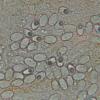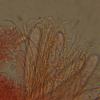
07-12-2025 16:07
Arnold BüschlenHallo, ich habe in einer Moos-Aufsammlung (epiphy

08-12-2025 21:04
Mark Stevens"Hello everyone,I'm relatively new to microscopy (

09-12-2025 12:06
 Andgelo Mombert
Andgelo Mombert
Bonjour,Je recherche l'article concernant Hypobryo

08-12-2025 18:59
 Lothar Krieglsteiner
Lothar Krieglsteiner
.. found by a seminar-participant, I do not know t

08-12-2025 17:37
 Lothar Krieglsteiner
Lothar Krieglsteiner
20.6.25, on branch of Abies infected and thickened

16-03-2014 22:00
Hello,I found this species a few months ago but ha

08-12-2025 13:39
Thomas Læssøehttps://svampe.databasen.org/observations/10572899
Asco fimicole : Coprotus sp.?
Yannick Mourgues,
10-08-2007 13:19
 Bonjour à tous.
Bonjour à tous.Voici un minuscule asco trouvé sur bouses de vache. En le voyant, j'avais pensé à un Coprotus. Mais je n'arrive à rien. Sans doute pourrez vous me dire ce que c'est ?
Description:
Macro :
Des centaines d'exemplaires en groupes compacts les uns à côté des autres, entre 0,1 et 0,5 mm de diamètre. Les jeunes exemplaires sont de forme sphérique à sommet aplani voir en creux, de couleur orangé-rougeâtre, les plus vieux sont plus ou moins discoïdes aplatis orangés.
Hyménium et excipulum lisses. L'espèce est sessile.
Micro:
Spores : elliptiques, lisses, hyalines, dimensions : 10,7 [11,1-11,3] 11,7x6,5 [6,8-7] 7,3 um
Q = 1,5 [1,61-1,65] 1,7 Parfois une guttule (de couleur violette dans l'eau!)
Asques 60-80x8-11 um cylindriques, base simple.
Paraphyses plus longues les asques (entre 10 et 20um de plus), fines (larges de 1-2um), septées, remplies de petites guttules, souvent à sommet recourbé en crosse (voir photo), souvent ramifiées en deux trois brins.
Textura globulosa.
Voilà ! Qu'en pensez-vous ?
Merci par avance.
Yannick Mourgues
Guy Garcia,
10-08-2007 13:45
Re:Asco fimicole : Coprotus sp.?
Les asques semblent octospores, alors peut-être Coprotus aurora. La guttule à l'intérieur de la spore correspond à une bulle de de Bary.
Amitiés, Guy
Amitiés, Guy
Yannick Mourgues,
10-08-2007 14:10

Re:Asco fimicole : Coprotus sp.?
Bonjour.
Guy, merci pour ta réponse ! Les asques sont bien octosporés.
Qu'est-ce que c'est qu'une bulle de De Bary ? J'en ai jamais entendu parler.
Merci
Guy, merci pour ta réponse ! Les asques sont bien octosporés.
Qu'est-ce que c'est qu'une bulle de De Bary ? J'en ai jamais entendu parler.
Merci
Jean-Louis CHEYPE,
10-08-2007 14:32
Guy Garcia,
10-08-2007 14:42
Re:Asco fimicole : Coprotus sp.?
Ce sont des bulles de gaz qui se forment à l'intérieur de la spore à maturité, masi on peut aussi provoquer cette réaction avec certains réactifs chimiques, tel que, par exemple, le bleu cotton (il faut parfois chauffer). Comme c'est de Bary qui les a décrites le premier en 1884, elles portent son nom. C'est une caractéristique des spores de Coprotus, mais que l'on peut observer chez d'autres genres d'ascomycètes.
Mais, certains membres du forum sont plus qualifiés que moi pour expliquer ce phénomène qui a fait l'objet de plusieurs publications. C'est un peu ancien, mais cet article est passionnant : DODGE B.O, 1957. Oil drops and du Bary "bubbles" in ascospores. [Neurospora tetrasperma, Lachnea (Patella) abundans]. Bull. Torrey Bot. Club 84 : 431-441.
Quant à ton champignon, après consultation de la littérature, Coprotus aurora est le meilleur candidat.
Bonne après-midi.
Amitiés, Guy
Mais, certains membres du forum sont plus qualifiés que moi pour expliquer ce phénomène qui a fait l'objet de plusieurs publications. C'est un peu ancien, mais cet article est passionnant : DODGE B.O, 1957. Oil drops and du Bary "bubbles" in ascospores. [Neurospora tetrasperma, Lachnea (Patella) abundans]. Bull. Torrey Bot. Club 84 : 431-441.
Quant à ton champignon, après consultation de la littérature, Coprotus aurora est le meilleur candidat.
Bonne après-midi.
Amitiés, Guy
Yannick Mourgues,
10-08-2007 15:20

Re:Asco fimicole : Coprotus sp.?
Ok. Merci infiniment à tous les deux !
Bon après-midi.
Yannick
Bon après-midi.
Yannick
Hans-Otto Baral,
14-08-2007 20:48

Re:Asco fimicole : Coprotus sp.?
DeBary bubbles (DBBs) are a very interesting phenomenon to understand the water relations of fungal cells, particularly spores. DBBs are often used as a character, especially in Pezizales. But one almost never reads in the literature that they are a result of desiccation. In fact, DBBs are a response to drying out which is a universal process in fungal spores. I do not know any example where spores do not rapidly loose their plasma water after ejection or release into the dry atmosphere. Erysiphales conidia are said not to loose water but I am sceptical.
Now, if the spore wall is rigid and cannot collapse, such a gaseous phase (DBB) is formed inside the spore, apparently inside the sporoplasma. So, if you mount a fresh Coprotus in water, you will not find any DBBs at all! But what Guy said is true: if you mount in lactophenol (in cotton blue), chloral hydrate (in Melzer) or other viscous media, you wil rapidly induce the DBBs because the high concentration of the medium extracts the spore water osmotically.
If you mount dry spores in water, then the DBBs are first present, but they disappear more or less rapidly because the spore takes up water, a prerequisite for germination. However, the DBBs disappear only if the spores are still alive. Within some months or years in the herbarium the spores die, and then they loose their capability to let the DBBs disappear.
Spores with less rigid walls either naturally and reversibly collapse when dry, or shrink if the spore wall is elastic.
See also on my DVD "CB Ecology", "Xero- & frosttolerance", "Images on xerotolerance", "Moist vs dry, micro". I have also written a chapter about DBBs in my paper "vital versus herbarium taxonomy" in Mycotaxon 1992.
Zotto
Now, if the spore wall is rigid and cannot collapse, such a gaseous phase (DBB) is formed inside the spore, apparently inside the sporoplasma. So, if you mount a fresh Coprotus in water, you will not find any DBBs at all! But what Guy said is true: if you mount in lactophenol (in cotton blue), chloral hydrate (in Melzer) or other viscous media, you wil rapidly induce the DBBs because the high concentration of the medium extracts the spore water osmotically.
If you mount dry spores in water, then the DBBs are first present, but they disappear more or less rapidly because the spore takes up water, a prerequisite for germination. However, the DBBs disappear only if the spores are still alive. Within some months or years in the herbarium the spores die, and then they loose their capability to let the DBBs disappear.
Spores with less rigid walls either naturally and reversibly collapse when dry, or shrink if the spore wall is elastic.
See also on my DVD "CB Ecology", "Xero- & frosttolerance", "Images on xerotolerance", "Moist vs dry, micro". I have also written a chapter about DBBs in my paper "vital versus herbarium taxonomy" in Mycotaxon 1992.
Zotto
Yannick Mourgues,
14-08-2007 23:10

Re:Asco fimicole : Coprotus sp.?
Thank's a lot for these explanations. It's very interesting. I'm looking for this article that Guy Garcia was talking about :
DODGE B.O, 1957. Oil drops and du Bary "bubbles" in ascospores. [Neurospora tetrasperma, Lachnea (Patella) abundans]. Bull. Torrey Bot. Club 84 : 431-441.
If someone has got it, could he send it to me in privat : ymourgues@gmail.com ?
Thanks a lot.
Merci à tous pour toutes ces explications. C'est vraiment très intéressant. Je cherche l'article dont Guy Garcia parlait ci-haut, mais ne le trouve nul part :
DODGE B.O, 1957. Oil drops and du Bary "bubbles" in ascospores. [Neurospora tetrasperma, Lachnea (Patella) abundans]. Bull. Torrey Bot. Club 84 : 431-441.
Si quelqu'un l'avait, pourrait-il me le scanner et me l'envoyer en privé sur l'adresse citée juste au-dessus ? Ou alors le déposer dans la documentation d'Ascofrance ?
Merci par avance.
Yannick
DODGE B.O, 1957. Oil drops and du Bary "bubbles" in ascospores. [Neurospora tetrasperma, Lachnea (Patella) abundans]. Bull. Torrey Bot. Club 84 : 431-441.
If someone has got it, could he send it to me in privat : ymourgues@gmail.com ?
Thanks a lot.
Merci à tous pour toutes ces explications. C'est vraiment très intéressant. Je cherche l'article dont Guy Garcia parlait ci-haut, mais ne le trouve nul part :
DODGE B.O, 1957. Oil drops and du Bary "bubbles" in ascospores. [Neurospora tetrasperma, Lachnea (Patella) abundans]. Bull. Torrey Bot. Club 84 : 431-441.
Si quelqu'un l'avait, pourrait-il me le scanner et me l'envoyer en privé sur l'adresse citée juste au-dessus ? Ou alors le déposer dans la documentation d'Ascofrance ?
Merci par avance.
Yannick
Guy Garcia,
14-08-2007 23:27
Re:Asco fimicole : Coprotus sp.?
Ayant une copie papier de cet article, je peux en faire un pdf mais pas avant la fin de la semaine prochaine. J'ai trop de boulot en ce moment ! Vivement la retraite que l'on puisse enfin étudier les champignons sérieusement et calmement !
Amitiés, Guy
Amitiés, Guy
Guy Garcia,
06-09-2007 22:40
Re:Asco fimicole : Coprotus sp.?
L'article a été déposé dans la rubrique documentation
Bonne lecture
Guy
Bonne lecture
Guy
Yannick Mourgues,
07-09-2007 10:09

Re:Asco fimicole : Coprotus sp.?
Merci beaucoup !
C'est très gentil à vous.
Yannick
C'est très gentil à vous.
Yannick
Hans-Otto Baral,
08-11-2007 13:47

Re:Asco fimicole : Coprotus sp.?
A short but late note to this discussion: Although I had a copy of the Dodge article, I remember only now when I was reading it again, that Dodge followed, in my opinion, an erroneous theory: he observed that the oil drops (LBs) in spores gradually disappear when the DBBs (the gas phase) is formed, and reappear when the DBBs disappear. So he thought of some connection between LBs and DBBs, although he could not give an explanation for that.
However, while the DBBs increase and decrease in SIZE, the LBs decrease and increase in VISIBILITY. Actually the LBs do not disappear physically but only optically. This optical disappearance is simply due to the increasing refraction index of the sporoplasma around the oil drops during dehydration of the sporoplasma. So the LBs help nothing in understanding the phenomenon of the gas phase which Ingold believed to consist of water vapour.
Zotto
However, while the DBBs increase and decrease in SIZE, the LBs decrease and increase in VISIBILITY. Actually the LBs do not disappear physically but only optically. This optical disappearance is simply due to the increasing refraction index of the sporoplasma around the oil drops during dehydration of the sporoplasma. So the LBs help nothing in understanding the phenomenon of the gas phase which Ingold believed to consist of water vapour.
Zotto







